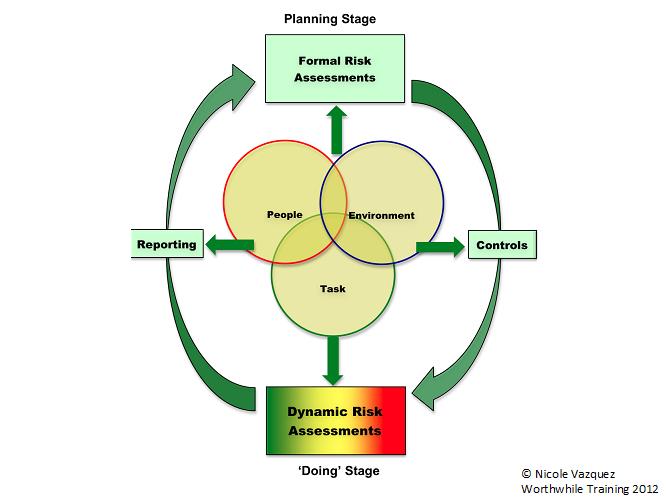In an article for SHP, Nicole Vazquez, Worthwhile Training, gives a detailed explanation of the PET analysis and how it applies to the health and safety of lone workers.
Changes in the way we work has resulted in increasing numbers of lone workers within the UK. More are also working ‘away from base’ and this brings with it new and specific risks. For example: where lone workers interact with customers or the public they are more likely to be subjected to abuse, violence or aggression than those who work alongside colleagues.
Over recent years we have noticed a rise in the number of managers and health and safety professionals asking us for assistance completing risk assessments and engaging their lone workers in the risk management process. To deliver the required support, we created a simple and effective learning tool to help lone workers and those responsible for them, to identify concerns, assess and communicate the risks. This has become a popular tool for lone workers and over time has been further developed so that is can be part of a larger risk management system.
The PET analysis achieves the following:
- It is a memorable training tool to help lone workers complete dynamic risks assessments and communicate their concerns. We ask lone workers to ‘Adopt a PET!’.
- It encourages lone workers to take proactive measures to safeguard their own safety within agreed protocols.
- As a risk assessment tool it assists managers to understand why the risks may occur and therefore complete robust risk assessments.
- As it breaks down the elements as to ‘why’ the risk may occur it also helps identify the control measures.
- It provides a common language for both managers and lone workers to understand the nature of the risk, improve communication, work together and input into the risk management process.
Since 2000, the PET model has been adopted by many organisations including several train operating companies, national house builders, social service departments and retailers.
How does it work? – Simply!
The PET analysis assists in identifying the three primary elements that contribute to personal safety and health and safety risks to lone workers.
- People – Is there anything about either the people that the lone workers are coming into contact with or the lone workers themselves that might increase the risks to their safety?
- Environment – Is there anything about the environment that might increase the risks to safety?
- Task – What is it about the activity being carried out that might create risks for the lone worker?
Whatever activity you are assessing, each of the three elements helps to build a picture of the likelihood of an incident occurring and the severity of harm should an incident occur. Each element adds to the overall picture of the potential risks faced and because the PET analysis helps identify the factors that create the risks, it can also help to identify potential control measures. Depending on the nature of the activity being carried out, one of the elements may be more important and highlight more significant issues than the others.
Below are examples of some of the questions that you may ask, depending on the activity. Each question is linked to potential risks; it is by no means an exhaustive list but it gives a flavour for the kind of factors you may wish to consider.


Nicole is one of the most knowledgeable and passionate lone worker safety experts in this country. We have invited Nicole to speak at our annual LONE WORKER SAFETY Expo every single year since its creation back in 2010 and our delegates continue to request her participation.
Very informative and thought provoking. The PET model is something we at ATW will take on board and use where applicable throughout our business. We love the simplicity of the model which can be used by frontline staff and managers alike. Nicole is the upmost professional and always delivers first class engaging training. We have worked with Nicole for a number of years now, in which she has delivered several Conflict management courses as well as being invited to deliver safety related presentations and talks at a number or our conferences. Her knowledge and genuine enthusiasm for her specialist subjects… Read more »
Thanks for your comment Kevin. You’re right it is the simplicity and adaptability that makes the PET model so useful across organisations.
Very informative! I love how easy the PET model is to follow, simple enough for our clients to understand but complex enough to cover all the bases. Thanks Nicole.